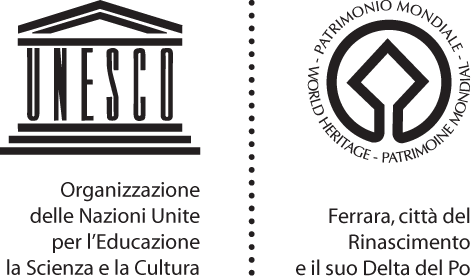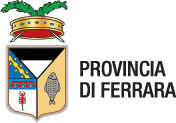Built in about 1385-1391 as a suburban retreat 'to escape boredom' (in Italian, 'schifar la noia', hence its name), the palazzo was later expanded under Borso d’Este (1450-1471), who shaped the building in his image, rendering it sumptuous and unique, equal to Ferrara’s high status in Europe at the time.
Likened to a “jewel set into a ring” and central to court life in the 15th and 16th centuries, Schifanoia then began a slow decline that changed its form and function, until the rediscovery of the Hall of the Months in the 19th century led to the transformation of the former suburban retreat into Ferrara’s city museum in 1898. After an earthquake in 2012 and the architectural restoration that followed, the Museo Schifanoia is once again open to visitors, offering a unique immersive and captivating experience.
VISIT
Visit path begins with the projection which reconstructs the building phases and conservation campaigns that have taken place at Palazzo Schifanoia over the centuries. Early maps of Ferrara help us to understand Schifanoia’s position in the urban fabric. The other objects on display tell the story of the origins of the museum: lapidary collection, made up of archaeological marbles; pieces of 15th Cent. graffito pottery; Pisanello's medals commissioned by Marquis Leonello d'Este; alabaster polyptych, masterpiece of English school; caskets decorated with bone and pastiglia.
The visit includes the main room of the Palace: the extraordinary Salone dei Mesi (Hall of the Months), painted in about 1469, celebrates the patron and his connection with gods and stars (with a new illumination system).
-------------------
The Hall of the Months conserves one of the most important 15th-century cycles of frescoes in Italy. It is the collective work of different Ferrarese painters from the school of Cosmè Tura, among whom were Francesco del Cossa and Ercole de’ Roberti. The high walls are divided into 12 sections, one for each month, but today only the months from March to September can be seen (to be read anticlockwise). Each month is in turn divided into three horizontal bands: in the upper one (the World of Gods) are the triumphant chariots of pagan gods, surrounded by mythological or ordinary life scenes. The world of man, upon which are inflicted the divine laws, is painted in the lower part showing the activities of the court and the townsfolk, and in which the figure of the patron, Duke Borso d’Este is portrayed, glorified as a wise and fair governor of his states. The third band is placed between men and gods and shows Western and Egyptian Zodiac signs, evidence of the great importance held by astrological “science” in the Estense court.
--------------------
The delightful room, Hall of the Virtues / of the Stuccos, had a strategic function as the room where Borso d'Este granted an audience to his visitors.
In the Hall of the Virtues, a sumptuous gold-painted panelled ceiling can be admired, realised by Domenico di Paris in the 15th century, with decorative motifs of rare beauty, among which are the duke’s badges. In the upper band of the walls the seated women represent the Cardinal and Theological Virtues. Note that the virtue that is missing is Justice, the one that the patron Borso considered most important. It was probably represented in a different form from the others (a fresco or a statue) or even, as some maintain, personified in the duke himself when, in this very room, he sat to listen to entreaties and settle legal disputes. This and the next room, the Sala delle Imprese, with its beautiful blue and gold caisson ceiling, conserve other objects belonging to the museum, including illuminated books from the monasteries of San Giorgio and the Certosa.
-----------------------
Other 10 rooms of the fifteenth-century building, some of which never open to the public: a journey through the age of Borso and Ercole I, the sixteenth-century splendor of Alfonso I and the autumn of the Renaissance.
The last room of upper floor was part of Ercole I's expansion of the palace to the east at the end of 15th century. During restoration work, fragments of the plaster decoration from the time of Borso were found on the west facade, featuring geometric motifs that simulated the effect of a polychrome marble wall.
--------------------
Painting Affections: religious painting in 16th and 17th Centuries.
The works on view in two rooms come from religious institutions devoted to assisting orphans, the poor and women in difficulty and are invaluable evidence of the spirit of solidarity that distinguished Ferrara and also a significant proportion of its art. Painters of this period are Niccolò Roselli, Giuseppe Mazzuoli, known as Il Bastarolo, Scarsellino and Carlo Bononi.
Gian Maria Riminaldi's Museum
This public museum, founded in 1758 at Palazzo Paradiso was strengthened and altered by the Ferrarese aristocrat Gian Maria Riminaldi. Riminaldi lived in Rome.
Between 1763 and his death in 1789, he sent a steady stream of works to Ferrara in the form of gifts: sculptures, mosaics and fine furniture, which he either had made or purchased on the antiquarian market and selected in keeping with the ruling passion for ancient art that pulsed through Rome.








